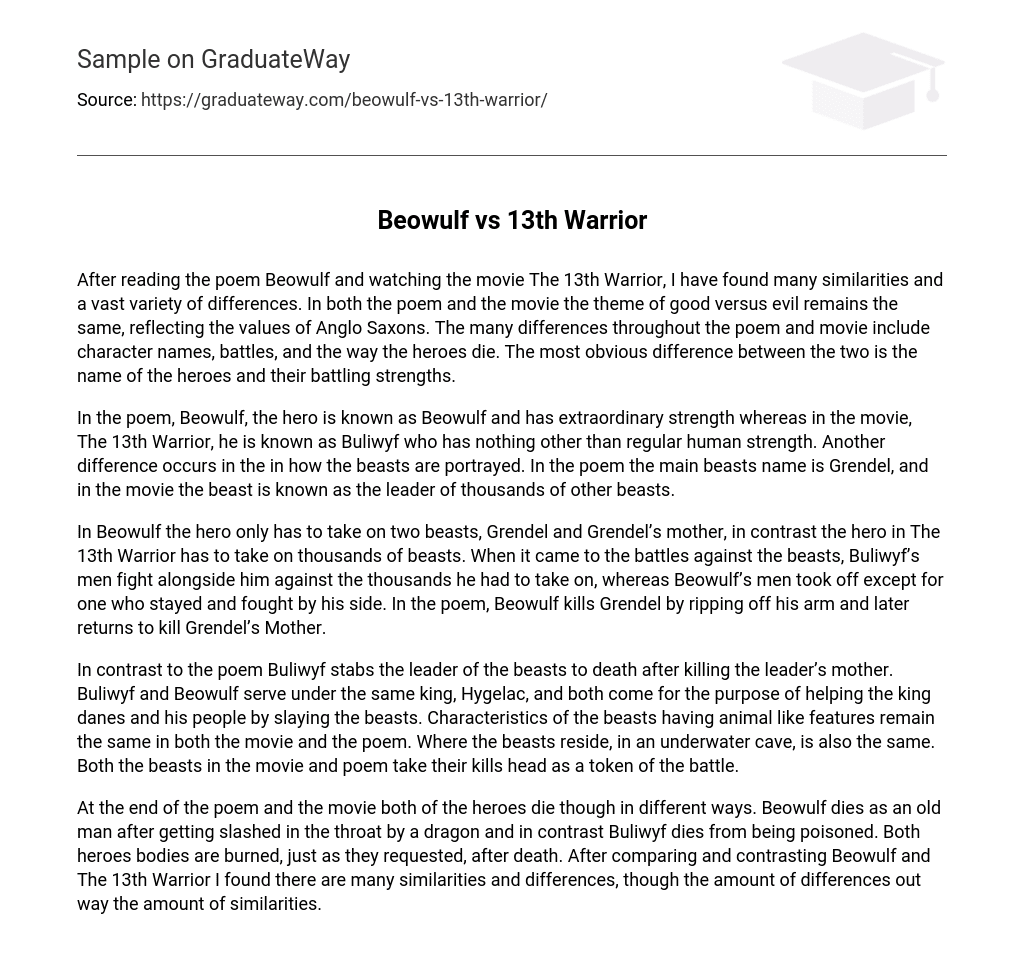After analyzing the poem Beowulf and the film The 13th Warrior, I have discovered numerous similarities and significant differences. Both the poem and the movie share the theme of good versus evil, which aligns with the Anglo Saxon values. However, various disparities arise in terms of character names, battles, and the heroes’ demise. The most apparent contrast lies in the heroes’ identities and their fighting abilities.
The hero in the poem Beowulf is named Beowulf, possessing incredible strength. However, in the movie The 13th Warrior, he is called Buliwyf and lacks any exceptional strength, being merely a regular human. Additionally, the beasts differ between the poem and the movie. In the poem, the primary beast is Grendel, whereas in the movie, it is depicted as the leader of numerous other beasts.
The hero in Beowulf faces the challenge of battling two beasts—Grendel and Grendel’s mother. In contrast, the hero in The 13th Warrior must confront thousands of beasts. Buliwyf, in the latter story, fights alongside his men against the countless enemies he faces. Conversely, Beowulf’s men desert him, except for one loyal companion who stays and fights by his side. As depicted in the poem, Beowulf defeats Grendel by tearing off his arm and later returns to slay Grendel’s Mother.
Contrary to the poem, in the movie Buliwyf kills the leader of the beasts after killing the leader’s mother. Buliwyf and Beowulf serve under King Hygelac and come to help the Danish king and his people by defeating the beasts. The beasts in both the movie and the poem have animal-like features. They reside in an underwater cave, which is also consistent in both versions. Additionally, both the beasts in the movie and poem take their kills’ heads as a symbol of victory.
Both Beowulf and Buliwyf, the heroes in the poem and movie respectively, meet their fateful ends, albeit through different means. Beowulf, as an elderly man, meets his demise by suffering a fatal slash to the throat from a dragon, while Buliwyf is poisoned. However, their bodies are both ceremonially burned according to their last wishes. Upon contrasting Beowulf and The 13th Warrior, I discovered numerous similarities and differences, although the discrepancies outnumber the resemblances.





